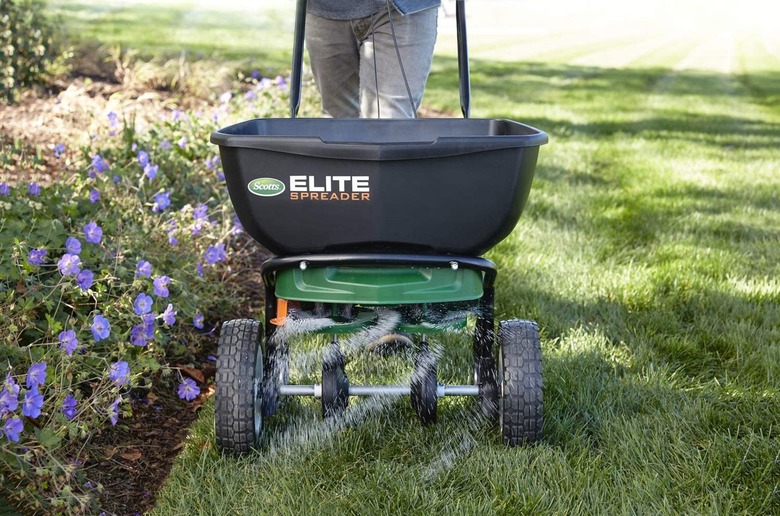How To Overseed A Lawn Without Aerating
As you and your family walk and play on your lawn during the summer months, the grass may begin to thin out in spots. While aerating is a common practice to revitalize the root system of the lawn's grasses, it's time consuming and the lawn sometimes looks bad for several weeks. If your lawn simply needs more grass, you can overseed it without aerating it. While you can overseed lawns early in the spring before the grass begins to grow, the best time to sow grass seed is late in the growing season before the first frost.
Overseeding Your Lawn
1. Mow the Lawn
Mow the lawn to a height of no more than 2 inches. Use a bag to catch the clippings even though you may not normally use one.
2. Rake the Lawn
Rake the lawn to remove debris, such as sticks and rocks. This process also removes some of the dead grass that is sitting on top of the ground. Raking makes it easier for the grass seed to come in contact with the soil.
3. Select the Same Grass Seed
Select the same grass seed that you already have in your lawn. Avoid mixing too many kinds of grass seeds as they may not be compatible with each other. Choose turf-type grasses rather than the counterpart sold for pastures. Turf-type grasses have smaller leaves that are less coarse. They work best in lawns. Pick grass seed that's compatible with the amount of light available for the section you are overseeding.
4. Set the Broadcast Spreader
Set the broadcast spreader to deliver the seed at half the rate you want to sow it. Follow the manufacturer's directions for setting your spreader. For general overseeding, figure 2 to 4 pounds per 1,000 square feet. If the lawn has bare spots, increase the amount to 4 to 6 pounds per 1,000 square feet.
5. Sow the Seed
Push the spreader around the perimeter of the area where you are going to sow grass seeds. Walk in a straight line inside the perimeter. Try not to overlap where the seed lands. Go back and forth across the lawn until you finish sowing the grass seed.
6. Sow Seed in the Opposite Direction
Reload the spreader with the remainder of the seed. Push the spreader in the opposite direction around the perimeter. Walk back and forth with the spreader as you did in the previous step, except make rows at right angles to the first pass.
7. Water the Lawn Lightly
Irrigate the lawn lightly with a lawn sprinkler attached to a garden hose until the seeds germinate. It's best to water lightly two or three times a day rather than applying one heavier watering. The water should penetrate at least 1 inch. As the plants sprout roots, water less frequently but allow the water to soak farther into the soil.
